From Fall Detection to Medication Alarms, See What’s New in “Aging in Place” Technology

High-tech monitoring systems and other gadgets are helping Canadians age in place, independently and comfortably. Photo: 10'000 Hours/GettyImages
Perhaps the findings of a recent report aren’t much of a surprise: 91 per cent of Canadians — and nearly 100 percent of those age 65 and older — plan on living independently in their own home as long as possible, according to a National Institute of Ageing (NIA)/Telus Health Survey.
Often referred to as “aging in place,” technology can play a critical role in helping seniors avoid an assisted living environment, such as a long-term care home. High-tech monitoring systems and other gadgets help older adults to live independently and comfortably, while giving caregivers, including family members, peace of mind in the process.
The following is a look at various offerings, in several categories, but is by no means a definitive list — nor are these tech tools a “one size fits all” scenario.
Fall Detection, Location Monitoring
Wearable devices, such as a pendants and smart watches, can sense an incident and relay the information to a remote caregiver and/or emergency services.
Features vary between solutions, however, such as some that work outside, or offer two-way voice support, so caregivers need to research ahead of time.
Along with its lightweight and waterproof design, Philips Lifeline products are some of the more popular on the market: HomeSafe with AutoAlert fall detection works at home (help button, plus communicator unit), while its GoSafe pendant (with AutoAlert and two-way voice) uses up to six locating technologies, including GPS, to find someone in an emergency. They can be worn as a pendent around the neck (where fall detection works the best) or on the wrist, if desired.
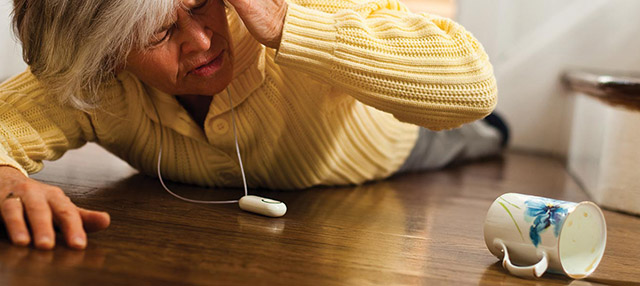
If you need help or there’s a sudden fall, the Lifeline wearer has access to a live person via a response centre in Toronto or Montreal, in English, French and many other languages. If requested (or if you don’t answer), they will contact emergency services, a building superintendent, family member, neighbour or so on.
HomeSafe costs $42.95/month for the landline version or $47.95/month if you don’t own a home phone, plus the added fall detection (AutoAlert) is an extra $15/month. The cellular GoSafe option costs $70/month or with an in-home communicator, $79.95/month, along with a one-time $89.95 installation fee.
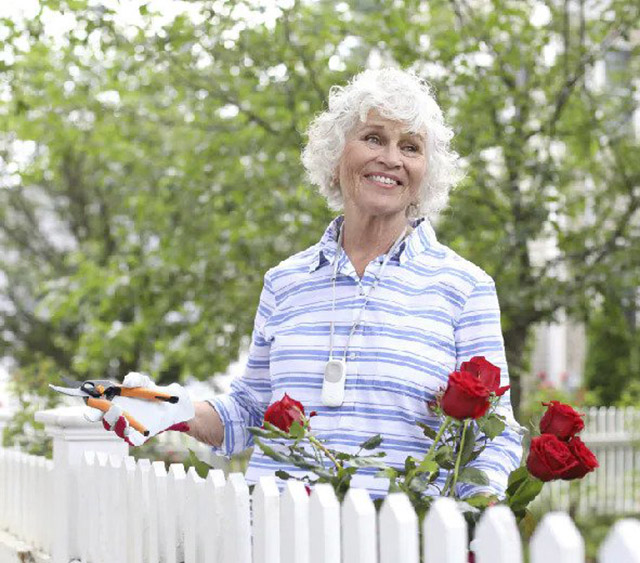
For each of these solutions, there is no contract; you can cancel at any time. Unlike smart watches, which you need to remember to charge, Philips Lifeline’s devices last a couple for years, says the company, and then sends Philips a wireless signal to notify you or a caregiver when the battery needs replacing.
But smart watches are also helping to detect falls, and many have additional — and innovative — health-monitoring features.
Apple Watch SE ($369), for example, offers fall detection and an Emergency SOS feature, which can call 911 and notify your emergency contacts if it detects a sudden drop. It also features water-resistance (50 metres), a heart rate monitor, voice-activated Siri support, fitness detection, sleep monitoring, and optional cellular connectivity (usually an extra $10/month with your carrier). You can use Apple Watch to pay for items by waving your wrist over a contactless terminal in stores.
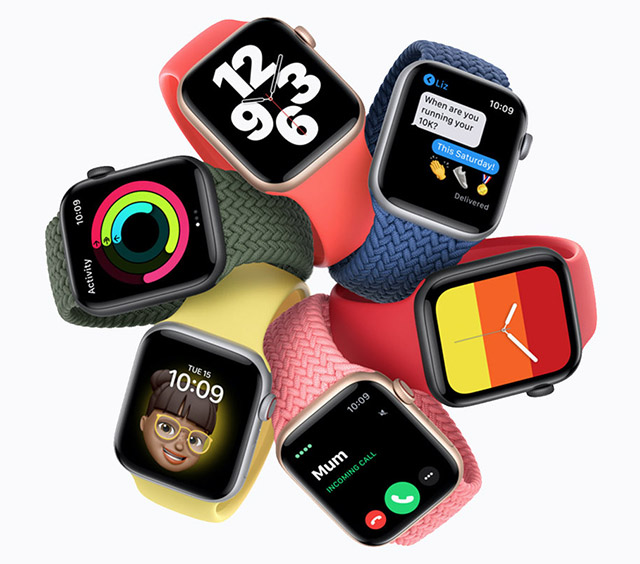
The top-of-the-line Apple Watch Series 6 (from $529) offers additional sensors to help gauge the wearer’s health, including a built-in ECG (electrocardiogram) to detect a dangerously high or low heart rate, or irregular heart rhythm (arrhythmias). These watches also have a Blood O2 monitor (pulse oximeter) to assess the amount of oxygen carried in the body by sending light into your wrist.
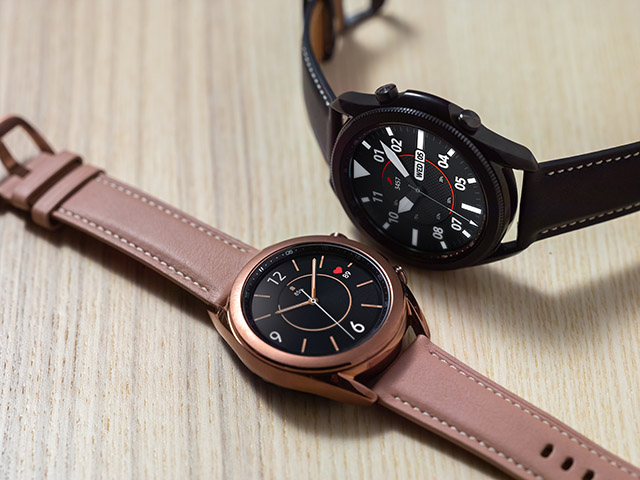
Samsung’s Galaxy Watch3 (from $479) also offers fall detection, which can send out an SOS to friends and family. But unlike Apple Watch it does not have a built-in ECG (like the U.S. model does). Galaxy smartwatches, which work with both iPhone and Android devices, also support an optional cellular option, if you won’t always want to have your phone with you.
Apps, Services, Too
Speaking of Apple Watch, Telus Health has launched its Telus Health Companion for the popular wearable device. This includes a 24-7 emergency monitoring service, with two-way voice, provided through Telus Health’s LivingWell Companion national response service.
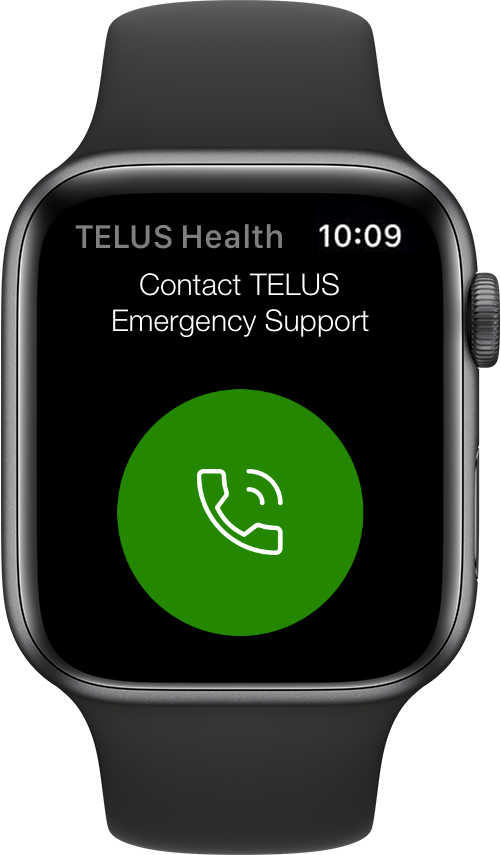
This partnership is a first in Canada.
If Apple Watch detects a hard fall or the user makes a call to emergency services, the info is immediately sent to Telus Health’s national Central Monitoring Station. A live operator then contacts the customer to confirm the emergency, then alerts designated emergency contacts — and can dispatch emergency support, if required.
Those with a cellular-enabled Apple Watch Series 4 (now discontinued) or later (such as Apple Watch Series 6) can add the Telus Health Companion service for $30/month. All users must have a post-paid wireless Telus plan with an iPhone 6s or later.
There are also several apps to help track a loved one, with consent, whether it’s on-foot or in a vehicle — or both.
GM, for example, just launched its OnStar Guardian App in Canada. Consider it an expansion of the life-saving 25-year-old in-vehicle service, but now available on a mobile device and to anyone who does not own a GM vehicle. In fact, the subscription can be shared with up to seven additional family members or friends, for the same cost.
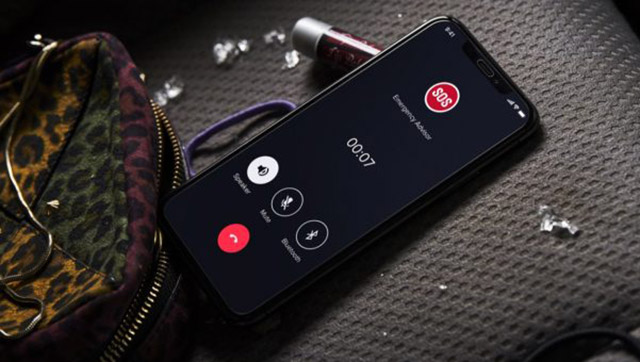
Similar to the in-vehicle version, the OnStar Guardian app offers mobile crash response (detecting an incident and reaching out to talk with you), roadside assistance, emergency services (24-7 access to OnStar emergency-certified advisors), and location status.
As you may have seen in a new TV commercial featuring a man with Alzheimer’s disease and his concerned daughter, location status means you view one another on a live map, receive real-time location updates, see mobile phone battery life status and more.
Available at the App Store (for iPhone) and Google Play (for Android), the OnStar Guardian app costs $15/month after a 30-day trial. OnStar Safety & Security Members now have Guardian as part of their existing plan.
Sensors and Cameras
Activity-based sensors around the home can discretely reassure loved ones that those living alone are going about their daily business, and all is okay.
If a change in pattern is detected, a remote family member, caregiver or emergency response service is alerted —via phone, email or text — if the at-risk loved one is doing (or not doing) something.
For example, a small sensor could detect if someone hasn’t left their bedroom by, say 9:30 a.m., and that’s unusual for them. Or if mom or dad hasn’t opened the fridge door or medicine cabinet in a specified number of hours.
You get the idea.
Installation of these sensors, which is often handled by a professional, is sometimes folded into the monitoring cost.
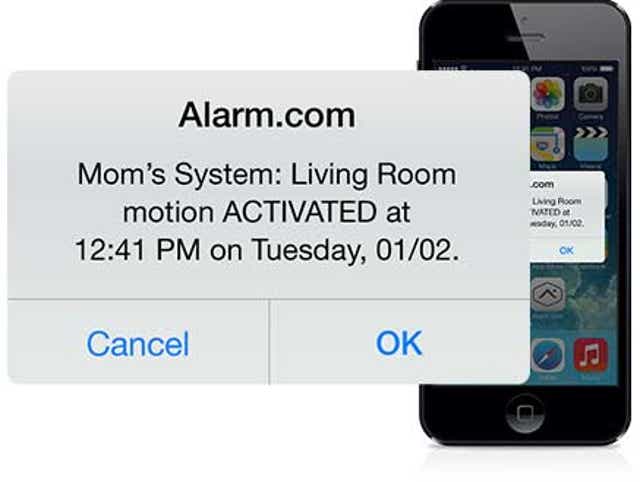
For example, Alarm.com’s Wellness independent living solution integrates a suite of sensors and devices (like its Wellcam intercom, with two-way audio and one-way video), and applies artificial intelligence and machine learning to the data they generate to proactively detect changes that may suggest risks. The company says it can report about changes in activity levels, sleeping and eating patterns, bathroom visit frequency and medication adherence, as well as emergency situations like falls or wandering out of the home.
These unobtrusive sensors can go on doors, windows, cabinets, chairs, under bed sheets, and so on.
Coupled with Alarm.com’s home security solution, Wellness is about $50/month, after installation costs, but pricing depends on the service provider and the exact mix of devices and sensors.
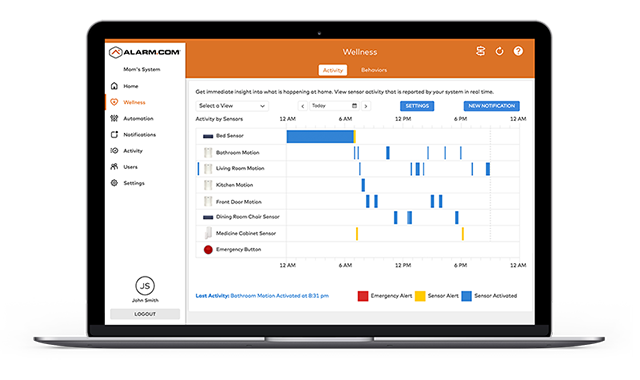
Cameras, with consent, are another good way to keep a virtual eye on loved ones living alone.
And frankly, after 16 months of video chatting during the pandemic, many are used to it by now.
It doesn’t matter what the platform is — a laptop, desktop, smartphone, tablet, Smart TV, or smart display (like Google Nest Hub Max or Facebook Portal) — video can be a much more effective way for caregivers to gauge how their loved one is doing, based on how they look or act, or the state of their home in the background.
A picture, as they say, is worth a thousand words.
There are several free services to use for the chatting, too, such as Zoom, Google Meet or Google Duo, Facebook Messenger, Skype, or FaceTime (currently limited to Apple’s products). Often, younger and more tech-savvy family members can set up an account and show their elder how to place and accept a video call.
What’s more, many people who live alone enjoy having a “face-to-face” meal with a friend or relative on a daily or weekly basis.
Medication Alarms, Dispensers
Especially for those with dementia, such as Alzheimer’s, it could be dangerous for a relative to forget to take their meds. Another unfortunate scenario is forgetting the pills were taken, and so taken again.
In fact, the US Food and Drug Administration (FDA) receives more than 100,000 reports a year tied to medication errors.
Thankfully, there are a few different medication alarms and dispensers available today.
While a U.S. company, E-pill says it has several Canadian customers and charges US$15 to ship devices from its Boston-based facility.
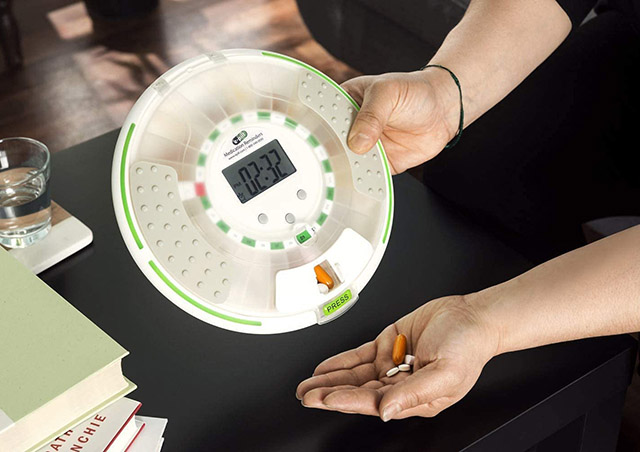
Prices start at US$249.95 for the E-pill MedSmart Voice, which is a locked automatic pill dispenser with up to six daily alarms, blinking lights, and friendly voice notification (“It’s time for your medications”). The circular AC-powered dispenser has a back-up battery (2 months, plus low battery warning).
E-pill’s MedTime Station (US$389.95), on the other hand, is more ideal for those with several different pills that need to be take, and/or for those with dexterity challenges. Simply pull the blue handle forward and the medication will fall into a provided stainless-steel medicine cup, which then turns off the alarm and flashing light. The lockable automatic pill dispenser has a 28-compartment tray, and can dispense medication up to six times a day.
Philips, too, has a Lifeline Automated Medication Dispenser ($59.95/month), helping people who live along stay on track with their meds.
RELATED:
Home Smart Home: The Latest Tech to Make Your Living Space Safer and Easier to Maintain
Can Science Solve Aging? A Look at the Latest Research on Life Extension